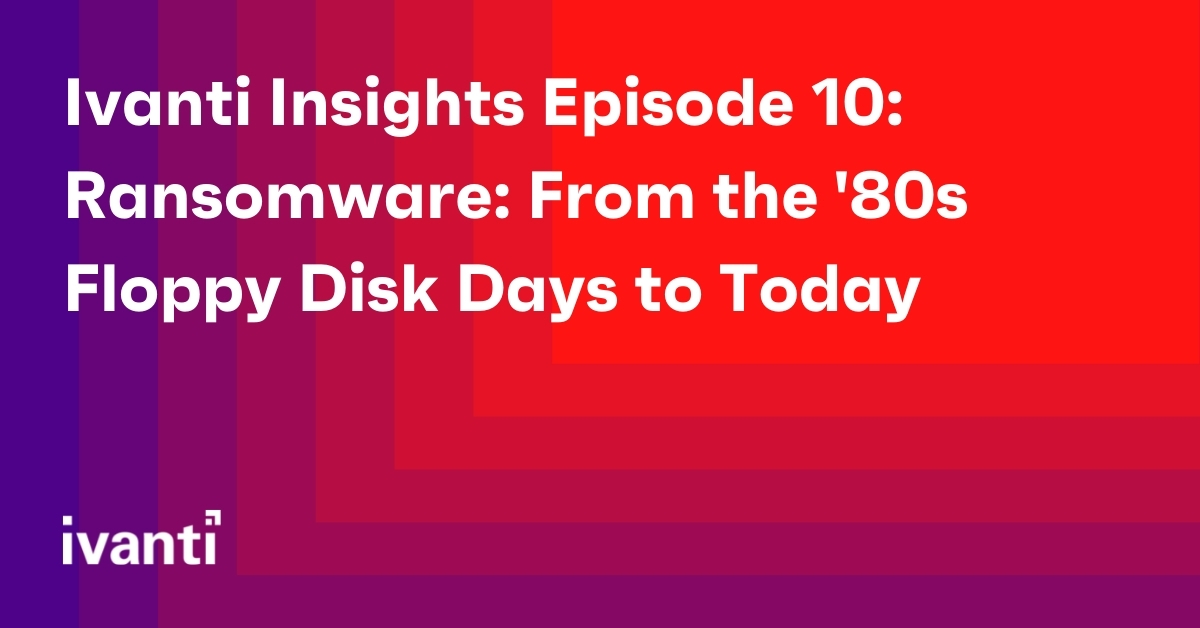Ivanti Insights Episode 10: Ransomware: From the '80s Floppy Disk Days to Today
Today I’m joined by our usual cast, Ivanti’s Chief Security Officer Phil Richards and Senior Director, Product Management, Chris Goettl. We didn’t waste anytime getting into today’s topic of ransomware, but before diving in, I have a question for you: Do you remember floppy disks back in the day?
Back in 1989, the first ransomware attack was documented and called AIDS Trojan. Thousands of floppy disks were sent out and disguised as an AIDS educational software. People placed these into their computers, having to boot up roughly ninety times, and once they reached the 90th count, the were asked to pay $189 to unlock their files. They had to send payment to a P.O. box in Panama.
Fast Forward to Ransomware Today
Obviously, ransomware is much more sophisticated as we fast forward 32 years. The threat of ransomware obviously is not going away, so I asked Chris and Phil: What do we need to know today?
If we go back to early 2018 and before that, ransomware was an opportunistic attack and was spread by malware. Threat actors banked on the hope that it would hit and spread across machines with a two to three-digit payout, but this was not scalable. In Q3 of 2018, ransomware payment got up to ~$5,000, with an average downtime of four days. This is when cybercriminals began to really focus on scaling out their business.
Here’s a mind-blowing fact – today, we are now up to an average of 23 days downtime, with payouts above $200,000! And that’s just the low-end. The Colonial Pipeline ransom was a whopping $4.4 million, with some ransomware attacks costing organizations tens of millions.
Everything points to ransomware truly being a business, but how has this business evolved over the last two and a half years and how do we stop ransomware? Is ransomware winning?
Tune in to the full episode below and check out our white paper, 9 Steps to Protect Against Ransomware.
Stay safe, be secure and keep smiling,
Adrian
